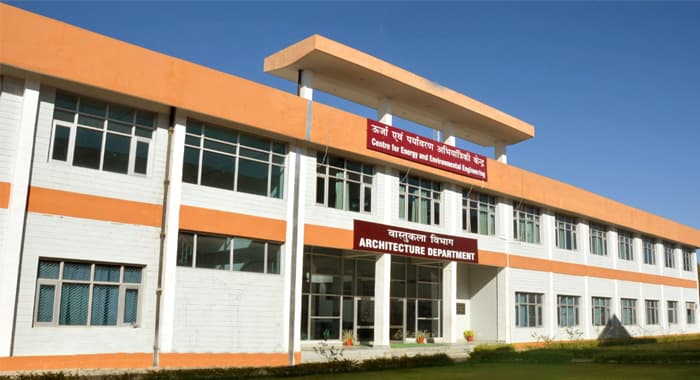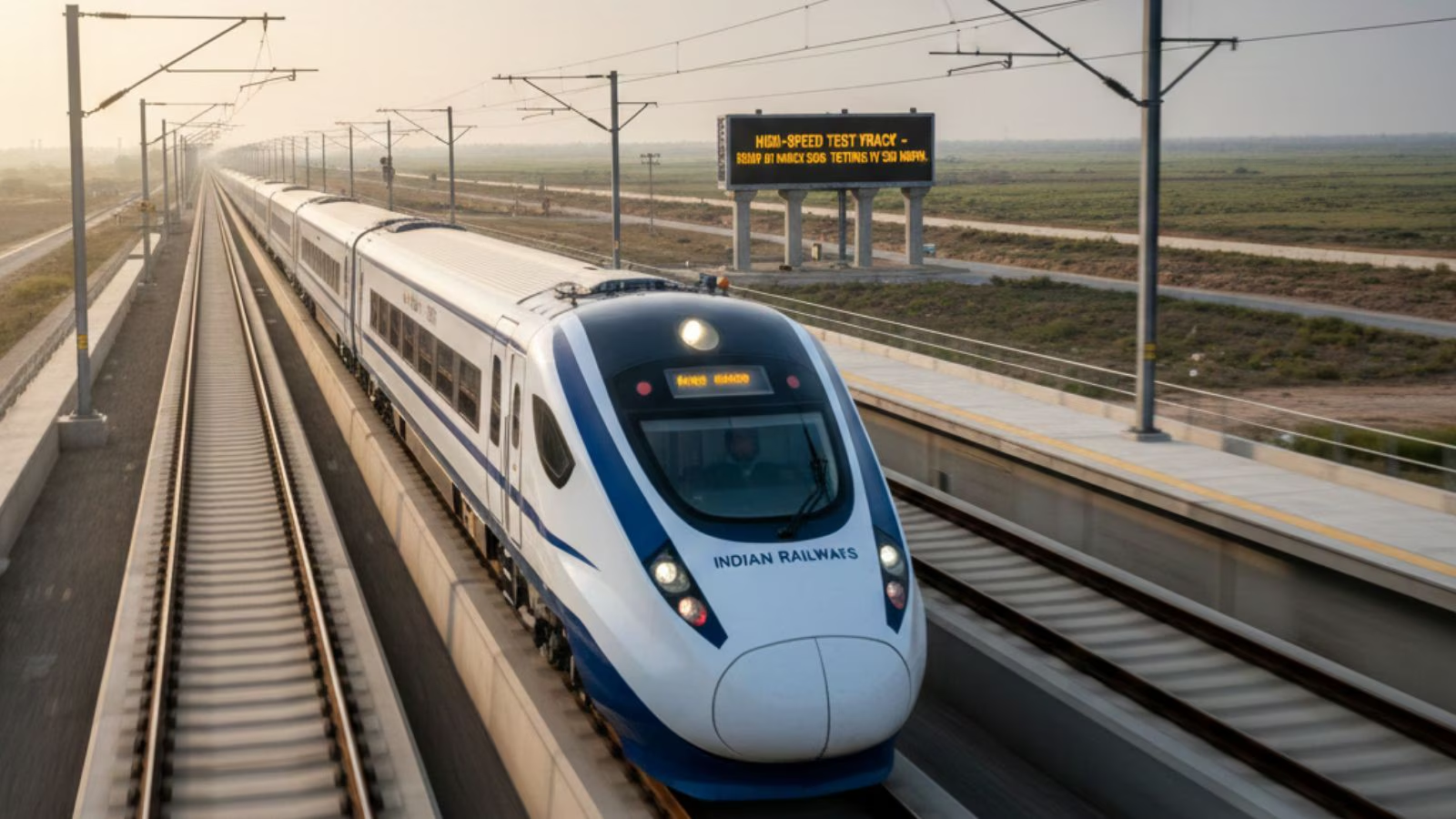Prof. Dr. Minakshi Jain, Dean of Research and Consultancy at the Department of Architecture at the National Institute of Technology (NIT), Hamirpur, explores the interplay between landscape architecture, hill architecture, and sustainable development during an exclusive interview with Education Post’s Prabhav Anand.
Q. How has your academic background, including a Ph.D., M.Arch in Landscape, and B.Arch., shaped your perspectives on landscape architecture, hill architecture, and sustainable development?

Sustainable development is the common thread that binds architecture and its various offshoots such as hill architecture and landscape architecture. The environmental crisis we are facing today is the result of inappropriate design and is a consequence of how our cities have been developed, industrialization has been undertaken, at the cost of ecosystems and natural resources. Architects are expected to be responsible for designing and planning buildings that are environmentally friendly and sustainable. It is obligatory on their part to consider the impact of their designs on the environment and the community. Whereas Landscape architecture involves designing outdoor spaces that are functional, ecologically viable and aesthetically pleasing. Landscape architects also work within boundaries of ecology and eco-systems. The latter is also an important aspect of sustainable development. Hill architecture, on the other hand, is a type of architecture or placemaking on hills and mountains. It takes into account the unique challenges of building on sloped terrain and incorporates sustainable design principles to minimize the impact on the environment. In summary, sustainable development is a critical aspect of architecture, and its allied disciplines. The element of sustainability must be considered to lessen the impact of the design and planning on the environment and the community.
Q. Your research covers diverse areas like urban park soundscapes and spatial planning in hill areas. Could you highlight a couple of your most significant findings and their contributions to the broader field of architecture and sustainable development?
Research is an integral part of architecture, landscape architecture, and sustainable development disciplines. It is fundamental for creating a better future for our planet. While undertaking my Master’s in the subject of landscape architecture, we were asked to design and plan the various projects including the urban park. While considering the onsite and offsite tangible and intangible elements, we were also subjected to explore the soundscape environment of the urban park. We were able to measure what types of sounds can create a pleasing and refreshing impact and others cause annoyance. Later on, it was researched out that by making the use of organic landscape elements, such as plants and water the soundscapes in the urban parks can be enhanced manifold. Regarding my research on spatial planning in hill areas, I have identified that the hill areas are ecologically fragile and vulnerable to environmental degradation. The unplanned and haphazard development of hill areas has led to several environmental problems such as soil erosion, landslides, and deforestation. To address these issues, we have proposed a framework for sustainable spatial planning in hill areas. The framework emphasizes the need for a comprehensive and integrated approach to spatial planning that takes into account the ecological, social, and economic aspects of hill areas. The framework also highlights the importance of community participation in the planning process and the need for effective governance mechanisms to ensure the implementation of the plan. A GIS-based framework for local spatial planning in hill areas has been developed to help Architects and Planners to make informed decisions about land use and development. These findings, along with many others, have contributed to the broader field of architecture and landscape architecture by providing insights into how we can undertake space making, design and built forms and how these entities can be shaped and located, which are safe, sustainable, and environmentally friendly.
Q. Teaching at NIT Hamirpur, situated in a hill region, must present unique challenges and opportunities. How has the geographical context influenced your teaching methods, and what aspects of hill architecture do you emphasize in your courses?
In hill regions, the unique topography and climate present challenges and opportunities for architects and planners. The key aspects of hill architecture include peculiar geomorphology in terms of slope, vegetation, flora, fauna, climate heterogeneity, marginality, and land use. The architecture of hills is also influenced by the local culture and traditions. The planning and designing require extensive research in site selection and site analysis to achieve terrain-friendly design.
As a result of these harsh conditions, a wide range of vernacular practices and styles have been developed by the local people, utilizing local materials and indigenous techniques that cause minimal damage to the environment and are sustainable.
A study of planning, design, and construction of buildings in hilly regions of India has highlighted the importance of taking lessons from sustainable vernacular practices for new development and formulation of building regulations for achieving contextually appropriate and sustainable development in hill settlements. Hence the students and researchers across the World visit this region to learn the indigenous practices for achieving sustainability in their respective designs.
This gives a boost to the culture and traditional knowledge systems of the local people.
Q. Sustainable development is crucial in modern architecture. In the context of hill regions, what role do architects play in promoting sustainable practices? Are there specific challenges and innovative solutions you find particularly relevant?
Architects can advocate for policies that encourage sustainable building practices, such as tax incentives for green buildings, building codes that require energy efficient design features, and zoning laws that promote mixed-use developments and encourage walking and biking.
In hill regions, architects face unique challenges such as soil erosion, landslides, and deforestation. To address these issues, architects can adopt innovative solutions and sustainable practices such as green roofs and green walls (by making the use of stone pitching, gabions, and rip-rap), rainwater harvesting systems, and the use of local materials and indigenous techniques that cause minimal damage to the slopes, environment, and are sustainable.
Architects can also play a significant role in creating sustainable communities by designing spaces that promote social interaction and a sense of community. This can include designing public spaces such as parks and plazas that encourage people to gather and interact, and designing mixed-use developments that provide a range of services and amenities within walking distance. Architects can also promote sustainable transportation by designing Ropeways, etc., that are easily accessible by the public for transportation. Biking and walking can also be encouraged through designing bike lanes and pedestrian pathways. The Public transportation can also be located near to the important public built forms.
Q. Your publications include works on traditional architecture and planning techniques in Himachal Pradesh. How can preserving and integrating traditional architectural knowledge contribute to contemporary sustainable practices?
Preserving and integrating traditional architectural knowledge can contribute significantly to contemporary sustainable practices. Traditional architecture is often based on local materials, indigenous techniques, and vernacular practices that are sustainable and environmentally friendly. By preserving and integrating these practices into contemporary architecture, architects can create buildings that are more energy-efficient, environmentally friendly, and culturally appropriate.
For instance, in Himachal Pradesh, traditional architecture is characterized by the use of local materials such as wood, stone, and mud, which are abundant and readily available. The traditional architecture of Himachal Pradesh is also designed to be energy-efficient, with features such as sloping roofs, thick walls, solarium, and small windows that help to regulate temperature and reduce energy consumption. Further documentation on the indigenous practices and traditional knowledge systems will help the local community and artisans.
By integrating these traditional architectural practices into contemporary architecture, architects can create buildings that are more sustainable and energy efficient. Architects can also design buildings that are energy-efficient by incorporating features such as passive solar design, natural ventilation, and rainwater harvesting systems.
Overall, preserving and integrating traditional architectural knowledge can contribute significantly to contemporary sustainable practices through adaptation.
Q. How have technological advancements influenced architecture, particularly concerning sustainable design and planning in hilly terrains? Are there specific tools or technologies you find beneficial in your work or believe hold great potential for the future of architecture?
Technological advancements have had a significant impact on architecture, particularly concerning sustainable design and planning in hilly terrains. For instance, innovative remote sensing techniques such as drones and airborne laser scanning have made it possible to exploit digital terrain analysis to synthesize key information for decision-makers and to plan sustainable interventions.
There are several tools and technologies that architects can use to promote sustainable design and planning in hilly terrains. For example, architects can use Building Information Modeling (BIM) software to create 3D models of buildings and simulate their performance under different environmental conditions. BIM software can also be used to optimize building designs for energy efficiency and sustainability.
Another technology that holds great potential for the future of architecture is 3D printing. 3D printing can be used to create complex geometry and shapes that are difficult or impossible to achieve using traditional construction methods. This can lead to more efficient use of materials and reduced waste, which can contribute to sustainable design and planning in hilly areas.
In addition to these tools and technologies, architects must follow sustainable construction practices such as utilizing southern slopes, respecting the topography/ contours with minimum cut and fill and further the architectural features of built form can complement the local environment. The use of local materials and indigenous techniques that cause minimal damage to the environment and are sustainable may be promoted.
Augmented reality programs overlay images onto the physical world around you that you see through your phone screen or other digital devices. Therefore, architects can use this technology to plan projects and examine how they look in real-life settings.
Virtual Reality (VR) and Augmented Reality (AR) are transforming the way architects design and present their projects. VR creates fully computer-generated and driven environments, while AR delivers virtual elements as an overlay to the real world.
Overall, technological advancements have provided architects with a range of tools and technologies that can be used to promote sustainable design and planning in the hill region.
Q. Looking ahead , how do you envision the future of landscape and hill architecture evolving over the next decade? Are there emerging trends or methodologies you believe will play a pivotal role in shaping the architectural landscape in hilly regions?
The future of landscape and hill architecture is expected to be shaped by several emerging trends and methodologies. One of the most significant trends is the increasing focus on sustainable design and planning in hilly regions. The emerging trend will be based on technological advancement in the construction/material industry. Since the local materials are almost banned, architecture needs innovation in composite materials, which can be reflective of the old heritage architecture and sustainable construction. The latter may be predominantly visible in the public buildings; however, the residential buildings may continue to follow the traditional or vernacular architecture of hills.
Overall, the future of landscape and hill architecture is expected to be shaped by sustainable design and planning practices, digital technologies, and community participation in the planning process. By adopting these emerging trends and methodologies, architects can create buildings and communities that are more energy-efficient, environmentally friendly, and culturally appropriate.

Q. For aspiring architects and researchers, based on your rich experience, what advice would you offer? How can they contribute meaningfully to the fields of landscape architecture, hill architecture, and sustainable development?
Firstly, it is essential to have a strong foundation regarding the principles of architecture and design. This includes a thorough understanding of design theory, construction techniques, and materials. Secondly, it is crucial to stay up to date with the latest trends and technologies in the field. This can be achieved by attending conferences, workshops, and seminars, as well as reading relevant publications and research papers. Thirdly, it is essential to develop a strong portfolio that showcases your skills and expertise. This can include design projects, research papers, and other relevant work. Regarding the fields of landscape architecture, hill architecture, and sustainable development, there are several ways in which aspiring architects and researchers can contribute meaningfully.
As far as designing in hills is considered, the challenging part is to provide comfortable conditions in a place where temperature goes below zero degrees. In Himachal Pradesh understanding of the various climatic zones/conditions, soil conditions, topography, and the precipitation and through understanding of the traditional designing and construction practices is very much essential. There is a strong need to study the new alternate materials and research can be undertaken to explore new materials, which can prove to be a boon for the hills.
















